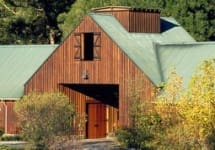Araujo Eisele Vineyard Syrah 2006
-
Robert
Parker



Product Details
Your Rating
Somm Note
Winemaker Notes
This wine shows a smoky nose with hints of leather and gaminess and a touch of slate. In the mouth, it is dense and voluptuous with flavors of black cherry and blackberry around a core of elegant but immense sweet tannins, finishing with a long chocolate persistence. Notes winemaker Francoise Peschon: This full-bodied wine shows enormous intensity without any heaviness. The elegance of the tannins balances their depth, and the smoky and flinty character adds charm and complexity to the rich fruit and earthy notes.
Professional Ratings
-
Robert Parker's Wine Advocate
The sexy, opulent, floral, blackberry and black currant-scented and flavored, medium to full-bodied 2006 Syrah Eisele Vineyard displays a seductive quality that is hard to ignore. I would opt for drinking it over the next decade.
Other Vintages
2012-
Wine
Spectator
-
Robert
Parker -
James
Suckling -
Wine
Spectator
-
Robert
Parker
-
Robert
Parker
-
Robert
Parker
-
Robert
Parker
-
Robert
Parker
-
Robert
Parker
-
Robert
Parker
-
Robert
Parker -
Wine
Spectator
-
Wine
Spectator -
Robert
Parker
-
Robert
Parker -
Wine
Spectator
-
Robert
Parker
-
Robert
Parker


